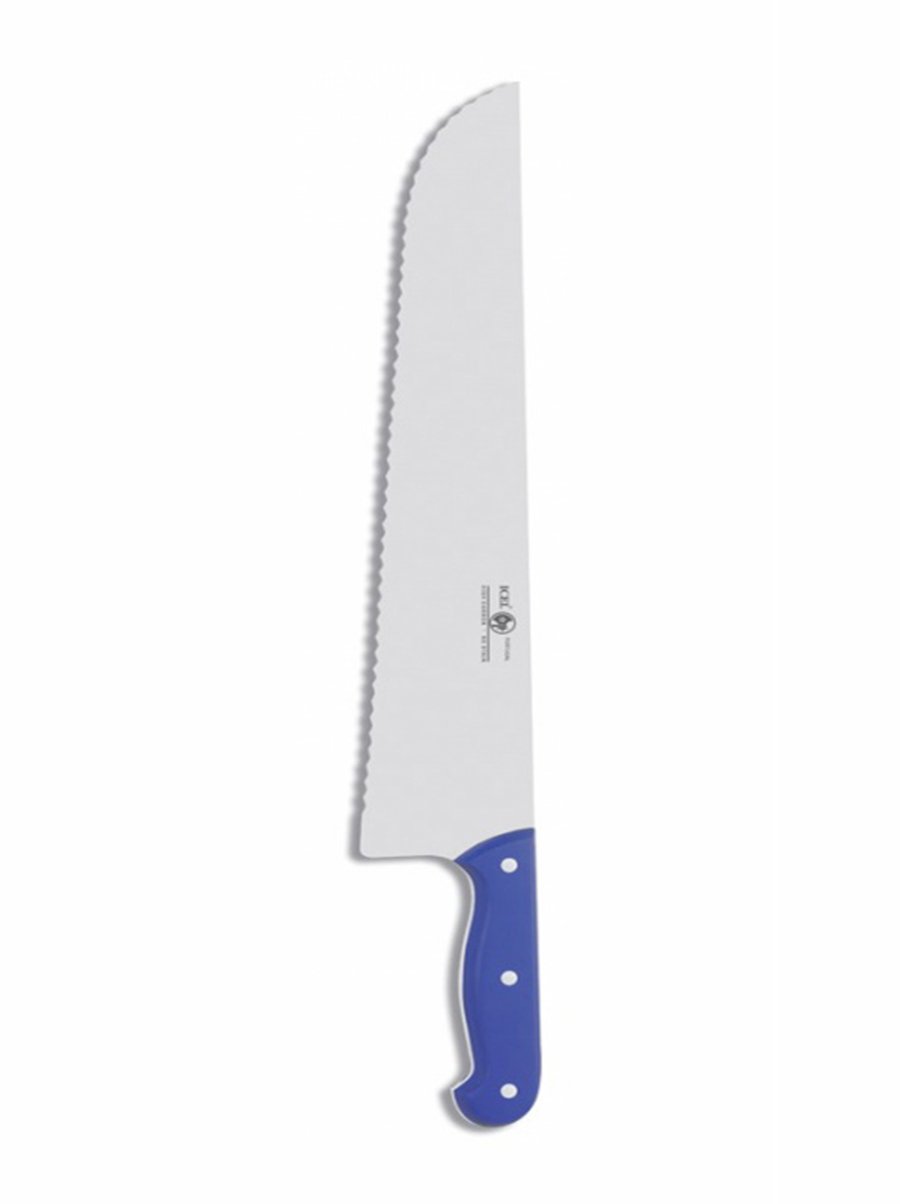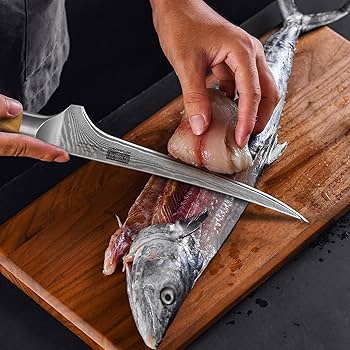Discover the Crucial Attributes to Seek in a Top-Quality Fish Knife
When picking a fish knife, several vital functions demand attention. The blade product dramatically affects toughness and sharpness, while flexibility plays an essential duty in precision. In addition, the manage style influences comfort throughout prolonged usage. Side retention and safety functions are also crucial for functional use. Understanding these aspects will guide customers toward making an informed choice, yet the subtleties of their importance might not be instantly clear.
Blade Product and Building
The performance of a fish knife mostly depends upon its blade material and building and construction - fish knife. Top notch fish blades normally include blades made from stainless steel, high-carbon steel, or a mix of both. Stainless-steel is favored for its rust resistance and reduced maintenance, making it suitable for freshwater and deep sea environments. High-carbon steel, while susceptible to rusting, supplies exceptional intensity and side retention, appealing to those who prioritize cutting efficiency
The construction of the blade likewise plays a critical role in its effectiveness. Full-tang blades, which prolong the whole size of the deal with, give improved stamina and equilibrium. On the other hand, partial-tang blades might endanger resilience. Additionally, the density of the blade must be considered, as thinner blades permit for extra exact cuts, important for delicate fish filleting. Eventually, a well-constructed blade, using the ideal products, is essential for accomplishing the finest outcomes when preparing fish.
Blade Versatility and Length
Blade flexibility and size are essential elements that significantly influence the efficiency of a fish knife. An adaptable blade enables exact cuts and the capability to navigate around bones and skin, making it important for filleting fish efficiently. The right quantity of adaptability can enhance control, enabling the customer to attain clean, smooth cuts with minimal initiative.
In terms of length, fish knives normally range from 6 to 9 inches. A longer blade is beneficial for bigger fish, supplying the reach needed for effective filleting. Conversely, a much shorter blade provides ability to move, making it suitable for smaller sized fish or detailed tasks.
Inevitably, the option of flexibility and size ought to straighten with the certain fishing requirements and preferences of the customer. A well-balanced mix of these characteristics ensures ideal performance, improving the total fish preparation experience.
Take Care Of Layout and Convenience
When using a fish knife, a well-designed take care of is necessary for making sure comfort and control. The take care of need to fit safely in the hand, allowing for a company hold during detailed tasks such as filleting or skinning fish. Products like rubber, timber, or composite provide different levels of comfort and grip, affecting the user's experience.
Ergonomic functions are likewise crucial; contours that comply with the all-natural form of the hand can reduce tiredness during extended use. In addition, the handle's texture plays a considerable function in protecting against slippage, especially when working with wet hands.
Weight distribution is one more aspect that adds to the general equilibrium of the knife, enhancing maneuverability. A comfortable manage style not just enhances efficiency however likewise promotes security, as a protected hold reduces the risk of accidents (fish knife). Ultimately, a thoughtful handle design can significantly elevate the effectiveness of a fish knife in cooking applications
Edge Retention and Honing
While using a fish knife, maintaining a sharp side is critical for attaining clean cuts and precise filleting. A quality fish knife need to show exceptional edge retention, allowing it to stay sharp with multiple usages. This particular is typically identified by the sort of steel utilized in the blade; high-carbon stainless steel is frequently preferred as a result of its check here equilibrium of hardness and deterioration resistance.

Security Functions and Sheath Options
When selecting a fish knife, numerous safety and security functions and sheath options are important factors to consider. An ergonomic and safe deal with reduces the threat of slides during usage, boosting user safety and security. Textured grips and finger guards further avoid accidents, enabling far better control while filleting fish.
In addition, a blunt suggestion can minimize the risk of slit injuries, making it a much safer choice for amateur users.
Sheath alternatives likewise play a vital duty in safety. A properly designed sheath safeguards the blade, preventing unexpected cuts when the knife is stored or transferred. Sheaths made from long lasting products, such as nylon or hard plastic, deal included protection versus ecological components.
Some sheaths include belt clips or loopholes, ensuring the knife is quickly obtainable while remaining protected. Inevitably, prioritizing security attributes and sheath options contributes dramatically to the overall functionality and customer experience of a fish knife.
Frequently Asked Concerns
What Is the very best Brand Name for Fish Knives?
The most effective brand for fish blades often varies by preference, however distinguished names like Wüsthof, Victorinox, and Reject are frequently recommended for their craftsmanship, longevity, and sharpness, making them leading options amongst culinary enthusiasts and professionals alike.
Can Fish Knives Be Made Use Of for Various Other Sorts Of Fish?
Fish blades can without a doubt be made use of for other kinds of fish. Their style and intensity make them flexible sufficient for different fish species, boosting the general experience of filleting and preparing various sorts of fish and shellfish.

How Do I Clean and Maintain My Fish Knife?
To clean up and maintain a fish knife, rinse it with cozy water after usage, delicately scrub with light soap, dry extensively, and shop in a safety sheath to stop damage and corrosion. Regular honing is necessary.
Exist Fish Blades Particularly for Left-Handed Users?
Yes, there are fish blades created especially for left-handed users. These blades include reversed blade angles and ergonomic takes care of, ensuring convenience and performance for left-handed people while filleting and preparing fish. Quality alternatives are readily available from numerous makers.
What Is the Cost Range for High Quality Fish Knives?
Quality fish blades usually range from $20 to $150, depending upon products, brand name credibility, and craftsmanship. Higher-end alternatives may feature specific designs and superior comfort designs, while budget-friendly selections still use adequate performance for informal customers.
The performance of a fish knife mainly hinges on its blade product and building. High-quality fish blades usually feature blades made from stainless steel, high-carbon steel, or a mix of both. Blade versatility and size are vital elements that greatly affect the efficiency of a fish knife. Fish knives can without a doubt be utilized for various other kinds of fish. These blades include reversed blade angles and ergonomic deals with, making sure convenience and effectiveness for left-handed people while filleting and preparing fish.